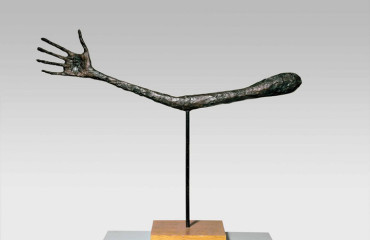
There are many photographers who work on an abandoned place and often their images are evocative, exciting, involving the viewer through the details of the peeling walls, the few furnishings corroded by termites or rusted, human traces which still stand despite the man does not live there anymore for years, for decades. Even Silvia Camporesi (Forlì, 1973) has been fascinated by the contemporary ruins, the “ghost town”, but what is new in his quest Atlas Italiae are the extent and continuity of the project: as the title suggests, the intention is to build a real Italian mapping of abandoned places, of that temporary and unstable status that leads to the complete dissolution of forms and objects or their reconstruction and redevelopment.
Here in the sequence Suite Emilia Romagna, then Planasia and now South Suite (the latter on display at ARTcore Gallery of Contemporary Bari until November 7, 2014) all sets printed in black and white and then hand-colored with pastels by the artist herself – which often work with physical interventions on the photograph through cuts, folds, assemblages that refer to the ancient technique of kirigami – which, in this way trying to revive those places, to revive them even with a slight but very noticeable and disturbing gap between the existing and the imagined, waste is perhaps the very essence of Camporesi poetic.
Despite she defines “hyperfotogenic” and therefore “unphotographable”, Silvia Camporesi has faced in 2011 also Venice. A whole month – February – lived through the mists of the lagoon, “along the foundations of which you can see the outlines only for a few meters, because more than sinking into the channels in a indistinct diffuse glow between water and air that dissolves into empty incipient so attractive as insidious”, writes Bruno Cora; The Third Venice, are photographs that are on one side a merger between the city’s real image and that of the miniature reconstruction of the park in Rimini, and the other in shots of the real world associated with a strong element of fiction.
Very recently the photographer has published the book Journey to Armenia, which is also the result of an idea that is based on the long-term: a stay of one month, an exhibition, and then a book. Retracing the steps of the famous voyage of the Russian writer Maendel’stam of 1930, Camporesi has gone through a territory decidedly different from the landscapes that she normally prefers, then forcing her to significant post-production work on the shades and lights on to propose a surreal and imaginative Armenia, full of silences, rough of stones and caressed by the tissues lying in the sun.
 English
English  Italiano
Italiano 














